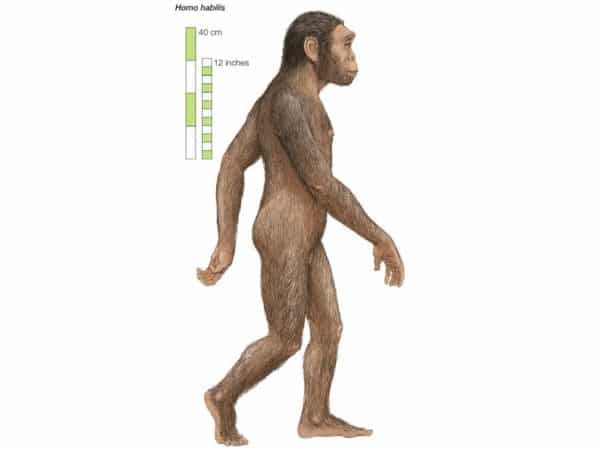
 New research published in the Journal of Human Evolution has found that an ancestral relative of modern-day humans may have been right-handed, providing further evidence that the division of cognitive labour between the two halves of the brain, otherwise known as brain lateralization, likely occurred early on in human evolution, at least 1.8 million years ago.
New research published in the Journal of Human Evolution has found that an ancestral relative of modern-day humans may have been right-handed, providing further evidence that the division of cognitive labour between the two halves of the brain, otherwise known as brain lateralization, likely occurred early on in human evolution, at least 1.8 million years ago.
Researchers studying the fossil remains of OH-65, a specimen of Homo habilis retrieved from the Olduvai Gorge in Tanzania, discovered minute cuts and ridges in the ancient human relative’s upper front teeth which were likely produced from OH-65’s use of a stone tool to cut meat.
“Experimental work has shown these scratches were most likely produced when a stone tool was used to process material gripped between the anterior teeth and the tool occasionally struck the labial face, leaving a permanent mark on the tooth’s surface,” said David Frayer, professor of anthropology at Kansas University and lead author of the study.
The direction of the tooth scratches, say the researchers, indicate that OH-65 was probably right-handed. “We propose that as more specimens are found, right-handedness, as seen in living Homo, will most probably be typical of these early hominins,” say the study’s authors.
Concerning the genus, Homo, scientists estimate that its first representative, Homo habilis, likely arrived on the evolutionary scene at least 2.1 million years ago. The so-named handy man (for its ability to use tools, many of which have been recovered at the Olduvai Gorge) spent its entire 600,000 years of existence in Africa, while next-in-line Homo erectus, has been documented to have roamed as far as China and Indonesia during its almost two million years of existence.
Modern humans or Homo sapiens, on the other hand, started out roughly 200,000 years ago, again in Africa, from where they spread around much of the globe, first reaching Asia about 75,000 years ago and Australia by 46,000 years ago.
While the timeline for human occupation of North America is still up for debate, theories suggest either 30 or 14 thousand years ago as the starting date for human migration across the land bridge of Beringia, down through Canada and all the way to Chile.
The idea that H. habilis was itself right-handed is a novel twist to evolutionary history.
Today, nine out of ten humans are right-handed, while in apes the split is roughly 50-50. And although the one specimen of OH-65 does not stand as conclusive proof of right-hand dominance among the ancient hominids (perhaps it was the right-handed exception rather than the rule), it potentially adds further detail to the evolutionary history of brain lateralization, with theories pointing towards the association between handedness, language development and the parcelling up of brain activity in either one hemisphere or the other.
One specimen does not make an incontrovertible case,” says Frayer, “but as more research is done and more discoveries are made, we predict that right-handedness, cortical reorganization and language capacity will be shown to be important components in the origin of our genus.”
Leave a Reply
You must be logged in to post a comment.




 Share
Share Tweet
Tweet Share
Share




Comment